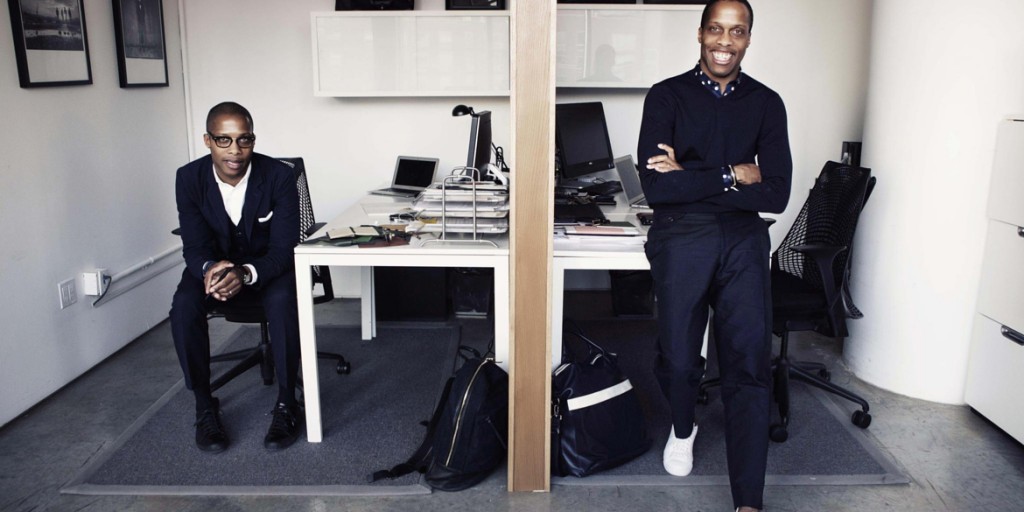In the old days, things were simple. When bling was king, and the world was free of pesky upstarts giving shoppers a taste of something better, luxury conglomerates could do whatever they pleased. Superficial frills, loud branding, and Paris Hilton endorsements kept cash registers ringing (or credit cards swiping), and if customers weren’t really all that thrilled by the whole thing, well tough luck — where else were they going to go?
Ten years ago, established luxury houses were on top of the world. But what they thought they knew — about shoppers, about the sector — was based on flawed logic that concealed a critical weakness. Their model, it turns out, is only safe in a market where consumers’ choices are limited to just a handful of options.

But the marketplace has now opened up, and for the consumer, this is a wonderful thing; not so much for Big Luxury executives who seem to have been completely blindsided by what’s unfolded. A slew of agile new companies have arrived, installing their own idea of luxury. The average shopper is now smarter, savvier, more discerning, and the wealth of choice they now have leaves the power in their hands. It’s this new reality that’s left the board members of incumbent brands in something of a panic, as industry expert Ana Andjelic recently suggested in a column at Luxury Daily. They’ve been in denial for quite some time, she argued, and they’ve been molasses-slow in coming to terms the new realities of the market, particularly when it comes to e-commerce. “Things have been increasingly blurry ever since e-commerce made its debut,” she wrote. “[Established luxury] brands [have] responded half-heartedly, at best.”
There’s no disputing that. Frankly, emerging brands have caught incumbents with their pants down. In a short amount of time, they’ve won the hearts and minds of today’s shopper, and in the process, they’ve slowly begun to chip away at Big Luxury’s market share little by little.
If you look closely, you can see the results of this playing out right now. It’s rarely identified or articulated outright by other sources, but if you read between the lines, you can make it out. Chris Woodyard and Hadley Malcolm of USA Today, as a recent example, inadvertently alluded to it in their piece, “Why luxury retailers are losing their luster” on Monday. Old luxury retailers (and brands in general) are having a rough go of it over the last couple of quarters, and Mr. Woodyard and Ms. Malcolm concluded that “threats to global stability” — terrorism, Brexit, and China’s economic slowdown — have “[rattled] international shoppers of high-end goods.” This, they say, is the source of the issue.
Global instability may be part of the problem. But it doesn’t adequately explain to us why we keep hearing so much about luxury conglomerates’ struggles. These afflictions seem to be chronic — and economic uncertainty and current events can only go so far to explain it.
Our take on the matter is rather simple: Even during tough times such as these, people are still buying; they’re just not buying from the old guard as much as before.
In 2006, if you were in the market for a luxury carry-on, you would probably look to Louis Vuitton first. Now, you go to Away, Raden, or WANT Les Essentiels (re: Peart brothers). If you wanted a pair of great shoes, perhaps you would go to Prada. Today, you might go to Sons of London, Margaux, or Jack Erwin. In the market for jewelry? Once it was Tiffany; now it’s Monica Vinader. Each of these companies is a specialist offering products that rival (or better) anything established brands can push out. Plus, they make it convenient to buy online, and their price points are far less inflated by marketing and branding overheads.
With tech, their innovative way of thinking goes even further. Rather than rejecting technology like the old guard tried to (or worse, fawning over new technology just because it’s new), they harness digital as means of achieving an end goal: making sure their customers are made to feel appreciated and taken care of. People want to feel like the high-priced items they buy, use, or wear are not only developed with their unique lifestyle in mind, but also well-equipped to solve the particular problem they may have. They want brands that speak their language, brands that share their worldview.
“Old-world” brands, as retail expert, Neil Saunders, called them, don’t do this. They would still much rather trumpet the latest celebrity endorser, the latest catwalk hype. Their priority is to feed the ego of the brand (or designer). Today’s smart upstarts, however, know that in a consumer-centric economy, doing this is a fool’s game. They get it. It’s about the customer, not about them. Our friend Sepand Oboudiyat of Sons of London, captured this mindset perfectly in an email to us on Monday, saying that brands like his “strip out anything that doesn’t directly benefit today’s modern consumer” in order to “give customers more of what they really want.” Spot on, we told him.
This consumer-first way of thinking largely explains why modern brands are growing stronger as Big Luxury continues to stumble. Ultimately, we’re hoping other publications will begin picking up on this. We’d like to believe that at some point soon, other sources will start to start to discuss the real topic at hand, which is how emerging brands have transformed, in one fell swoop, both the way the luxury industry operates, and the higher expectations consumers now have in the companies they choose to support. We find this to be a much more interesting (and optimistic) storyline than the repetitive, ongoing discussion of the troubles facing legacy conglomerates.






